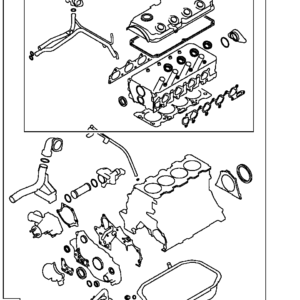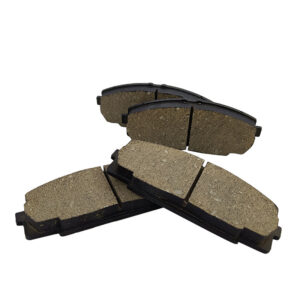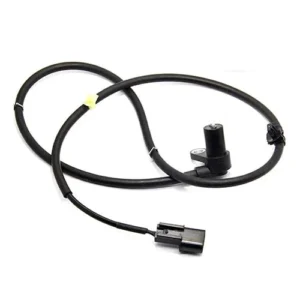Title: Transmission Speed Sensor: Navigating the Shifts with Precision
In the intricate ballet of an automotive transmission, where every gear change is orchestrated with precision, the transmission speed sensor emerges as a silent navigator, guiding the shifts with unparalleled accuracy. Often overshadowed but undeniably crucial, this unassuming component plays a pivotal role in ensuring smooth gear changes, optimal performance, and driver confidence. In this blog, we’ll delve into the significance of the transmission speed sensor, how it works, its importance in transmission operation, and its indispensable contribution to the driving experience.
### Unraveling the Transmission Speed Sensor
The transmission speed sensor, also known as the turbine speed sensor or output speed sensor, is a critical component of the transmission system in modern vehicles. Positioned within the transmission housing, its primary function is to monitor the rotational speed of the transmission output shaft.
### How the Transmission Speed Sensor Works
The transmission speed sensor operates based on electromagnetic or Hall effect principles. It consists of a magnet and a coil of wire, with the magnet attached to the transmission output shaft. As the shaft rotates, it generates a magnetic field that induces a voltage in the coil. This voltage signal is then sent to the transmission control module (TCM) or powertrain control module (PCM), which uses it to determine vehicle speed and control transmission shifts.
### Importance of the Transmission Speed Sensor in Transmission Operation
1. **Shift Timing Control**: The transmission speed sensor provides essential data to the TCM or PCM, allowing for precise control of shift timing. By monitoring the rotational speed of the transmission output shaft, the sensor helps ensure that gear changes occur at the optimal time, resulting in smooth and seamless shifts.
2. **Transmission Diagnosis**: The transmission speed sensor also plays a crucial role in diagnosing transmission problems. Irregularities in output shaft speed can indicate issues such as slipping clutches, worn gears, or hydraulic pressure problems, allowing technicians to diagnose and repair transmission issues more efficiently.
3. **Speedometer Operation**: In addition to controlling transmission shifts, the transmission speed sensor provides input for the vehicle’s speedometer. By monitoring output shaft speed, the sensor allows the speedometer to accurately display vehicle speed, ensuring that drivers have precise information about their vehicle’s velocity.
### Signs of a Failing Transmission Speed Sensor
– **Erratic Shifting**: Erratic or harsh shifting may occur if the transmission speed sensor is malfunctioning or sending incorrect signals to the TCM or PCM.
– **Speedometer Inaccuracy**: Inaccurate speedometer readings, such as a speedometer that reads higher or lower than the actual vehicle speed, may indicate a problem with the transmission speed sensor.
– **Check Engine Light**: An illuminated check engine light on the dashboard may indicate a problem with the transmission speed sensor or related components.
– **Transmission Slippage**: Transmission slippage, where the transmission shifts unexpectedly or fails to engage properly, may occur if the speed sensor is not functioning correctly.
### Conclusion
In the intricate tapestry of transmission operation, the transmission speed sensor stands as a silent navigator, guiding gear changes with precision and accuracy. From controlling shift timing to diagnosing transmission issues and ensuring accurate speedometer readings, the role of the transmission speed sensor in shaping the driving experience cannot be overstated. As automotive technology continues to advance, the importance of transmission speed sensors in achieving optimal transmission operation remains undeniably critical, ensuring that vehicles navigate the roads with smooth shifts, reliable performance, and driver confidence.
In stock (can be backordered)
$29,137.67
Title: Transmission Speed Sensor: Navigating the Shifts with Precision
In the intricate ballet of an automotive transmission, where every gear change is orchestrated with precision, the transmission speed sensor emerges as a silent navigator, guiding the shifts with unparalleled accuracy. Often overshadowed but undeniably crucial, this unassuming component plays a pivotal role in ensuring smooth gear changes, optimal performance, and driver confidence. In this blog, we’ll delve into the significance of the transmission speed sensor, how it works, its importance in transmission operation, and its indispensable contribution to the driving experience.
### Unraveling the Transmission Speed Sensor
The transmission speed sensor, also known as the turbine speed sensor or output speed sensor, is a critical component of the transmission system in modern vehicles. Positioned within the transmission housing, its primary function is to monitor the rotational speed of the transmission output shaft.
### How the Transmission Speed Sensor Works
The transmission speed sensor operates based on electromagnetic or Hall effect principles. It consists of a magnet and a coil of wire, with the magnet attached to the transmission output shaft. As the shaft rotates, it generates a magnetic field that induces a voltage in the coil. This voltage signal is then sent to the transmission control module (TCM) or powertrain control module (PCM), which uses it to determine vehicle speed and control transmission shifts.
### Importance of the Transmission Speed Sensor in Transmission Operation
1. **Shift Timing Control**: The transmission speed sensor provides essential data to the TCM or PCM, allowing for precise control of shift timing. By monitoring the rotational speed of the transmission output shaft, the sensor helps ensure that gear changes occur at the optimal time, resulting in smooth and seamless shifts.
2. **Transmission Diagnosis**: The transmission speed sensor also plays a crucial role in diagnosing transmission problems. Irregularities in output shaft speed can indicate issues such as slipping clutches, worn gears, or hydraulic pressure problems, allowing technicians to diagnose and repair transmission issues more efficiently.
3. **Speedometer Operation**: In addition to controlling transmission shifts, the transmission speed sensor provides input for the vehicle’s speedometer. By monitoring output shaft speed, the sensor allows the speedometer to accurately display vehicle speed, ensuring that drivers have precise information about their vehicle’s velocity.
### Signs of a Failing Transmission Speed Sensor
– **Erratic Shifting**: Erratic or harsh shifting may occur if the transmission speed sensor is malfunctioning or sending incorrect signals to the TCM or PCM.
– **Speedometer Inaccuracy**: Inaccurate speedometer readings, such as a speedometer that reads higher or lower than the actual vehicle speed, may indicate a problem with the transmission speed sensor.
– **Check Engine Light**: An illuminated check engine light on the dashboard may indicate a problem with the transmission speed sensor or related components.
– **Transmission Slippage**: Transmission slippage, where the transmission shifts unexpectedly or fails to engage properly, may occur if the speed sensor is not functioning correctly.
### Conclusion
In the intricate tapestry of transmission operation, the transmission speed sensor stands as a silent navigator, guiding gear changes with precision and accuracy. From controlling shift timing to diagnosing transmission issues and ensuring accurate speedometer readings, the role of the transmission speed sensor in shaping the driving experience cannot be overstated. As automotive technology continues to advance, the importance of transmission speed sensors in achieving optimal transmission operation remains undeniably critical, ensuring that vehicles navigate the roads with smooth shifts, reliable performance, and driver confidence.
| Warehouse | Inventory at warehouse 2 |
|---|



Get E-mail updates about our latest products and special offers.
Sensors and More is Jamaica’s ultimate online auto parts store. Established in 2020, we specialize in genuine electrical parts for Japanese, Read more…
Reviews
There are no reviews yet.